10 Reasons Why Bobby Jones Was The Greatest Amateur Of All Time
The American left an incredible golfing legacy through his exploits on and off the course. Here are 10 reasons why he was the greatest ever amateur.
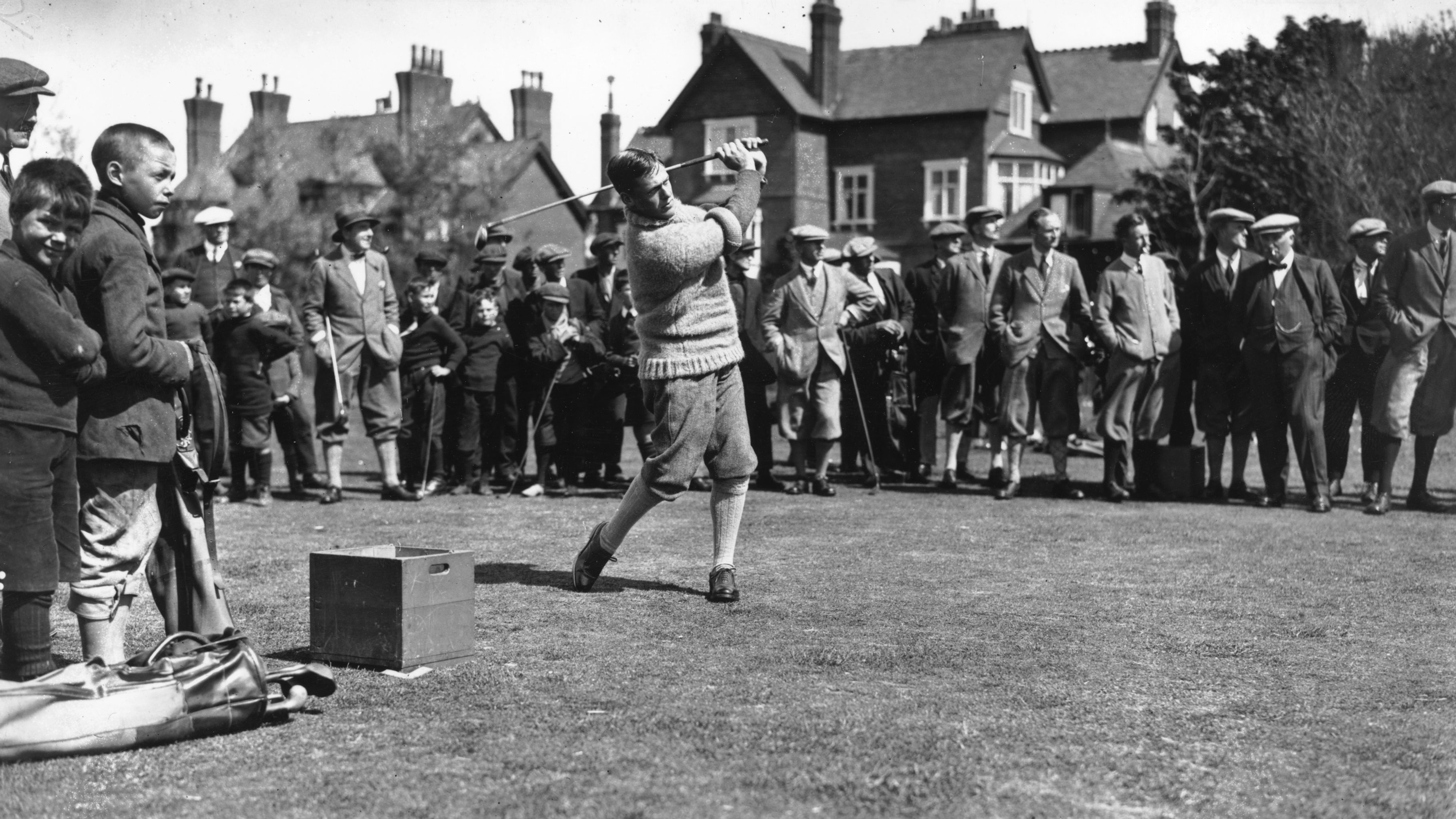
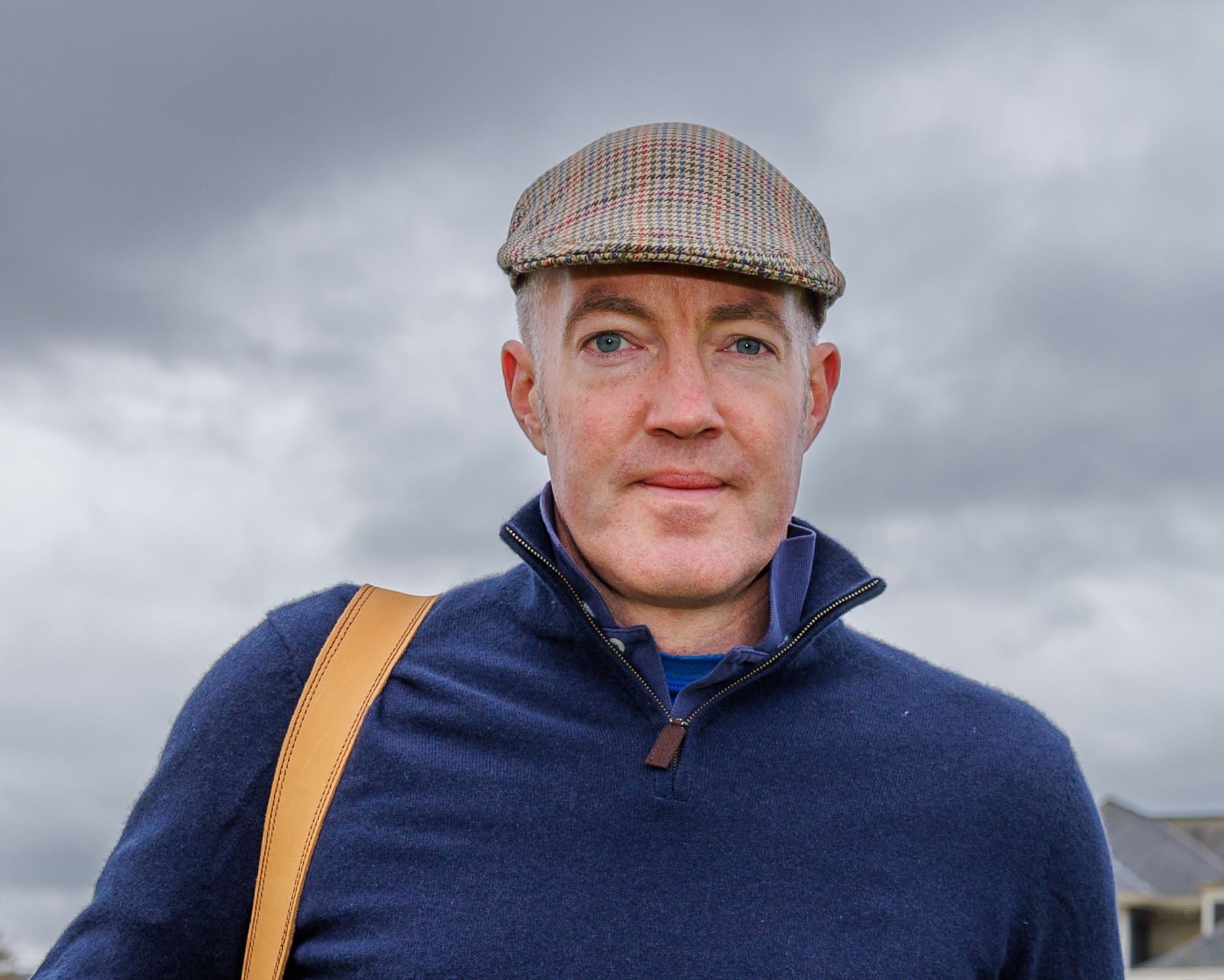
It’s arguable that no amateur sportsman, possibly no sportsperson has ever achieved so much in such a short space of time as Bobby Jones. He stepped away from golf having won a simply extraordinary number of competitions in his “seven fat years,” as his mentor OB Keeler described them.
Fergus Bisset and Neil Tappin Talk Bobby Jones on their 18 Majors Podcast
1923-1930 “The Seven Fat Years.”
Upon completing his remarkable Grand Slam in 1930, he was just 28-years old. He had won 13 Major titles (that including The Amateur which he won just the once and the US Amateur which he won five times).
From 1923 when he won his first US Open aged 21 at Inwood to 1930 when he won his final US Amateur at Merion, he played in 21 Majors (including the amateurs), he won 13 of them. Over 60% win rate. He turned up to play in the Open Championship four times and he won three of them.
The Grand Slam
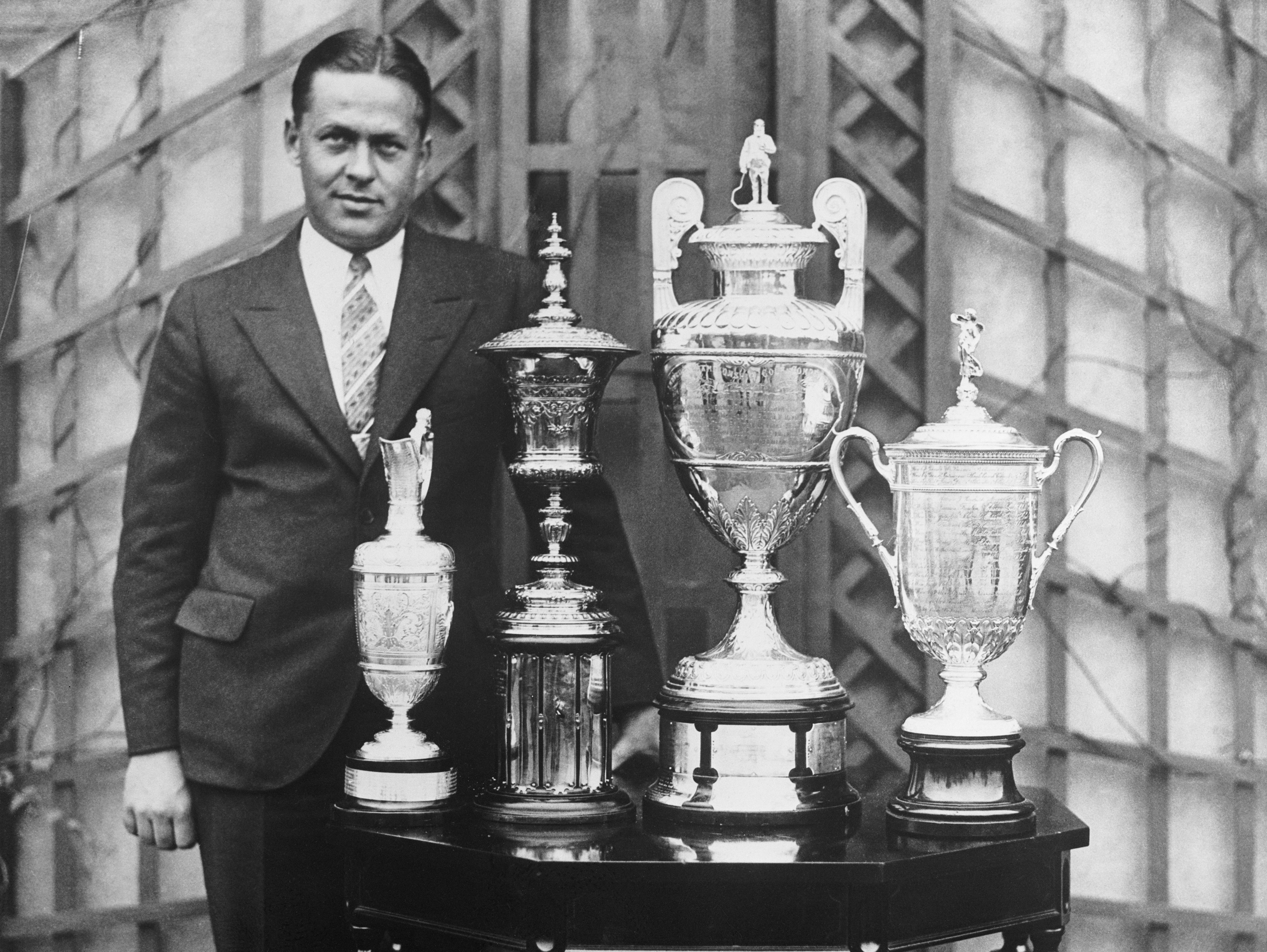
Bobby Jones and his trophy collection in 1930
In 1930 he won the US and British Amateurs as well as the US and British Opens, a feat referred to as the “impregnable quadrilateral” or sometimes the “Grand Slam.” It’s something that will surely never be replicated.
Quiz: Bobby Jones and Walter Hagen
Retired at 28
Think of it like this: When Jack Nicklaus was 28, he’d won just 7 of his 18 Majors, Tiger had won 8 of his 15. Arnold Palmer hadn’t won a professional Major at the age of 28. Ben Hogan hadn’t won one either.
Jones had won 13 Majors. He’d played in five Walker Cups (The US won all five and he was playing captain for the last two). He won nine of his 10 matches in Walker Cups.
He learned to curb his temper
A great story comes from the 1916 US Amateur. Jones was 14, it was his first outing in the event. He was playing Eben Byers in the first round who also had a temper. Apparently, the match behind thought they were watching a juggling display up ahead because there was so much club throwing. At one point Byers threw a club out of bounds and lost it. Jones later said that he won that match because Byers ran out of clubs first.
Get the Golf Monthly Newsletter
Subscribe to the Golf Monthly newsletter to stay up to date with all the latest tour news, equipment news, reviews, head-to-heads and buyer’s guides from our team of experienced experts.
One Jones club throw in an exhibition against Jerry Travers in Canada in 1918 was so impressive, flying over the heads of the spectators into some bushes, that there was a round of applause and much laughter as everyone tried to find it.
His temper got the better of him at St Andrews in his first Open outing in 1921. He was struggling in the third round. Turned in 46, made a six on the 10th then hit into Hill (not strath) bunker on the 11th. What happened next is not clear, but Jones later said he didn’t get out of the bunker and gave up. But he did not smack his ball into the Eden Estuary as some have suggested. At least, he said he didn’t.
But he was a young man then – Just 19. He received a ticking off from Jock Hutchison for his poor behaviour, he also had guidance from the likes of Francis Ouimet (another great amateur and 1913 US Open champ). He never lost his passion, but he learned to keep it inside and to use it for competitive advantage. The great Bernard Darwin said of him that he “played the game outwardly as a man of ice, but the flames still leaped within.”
He gave his absolute all
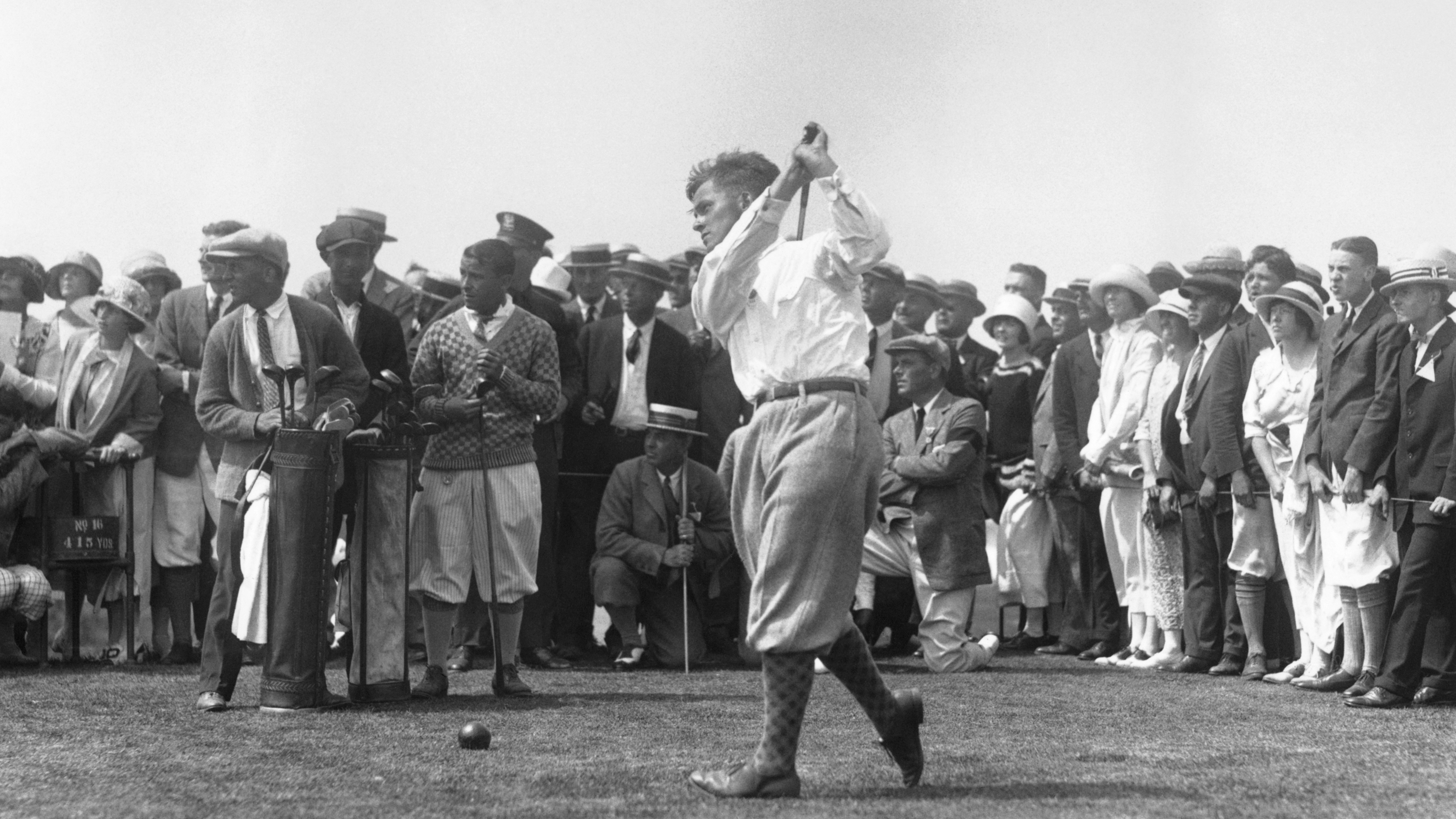
One of the reasons he stepped away in 1930 was that golf took a great deal out of him. When he won at St Andrews in 1927, spectators said he looked ill as he made his way round the last two rounds – it drained him hugely.
In 1926 after making birdie on the final hole to beat Joe Turnesa by a stroke in the US Open at Scioto, he semi collapsed, downed a stiff drink and burst into tears.
He won the British crowds
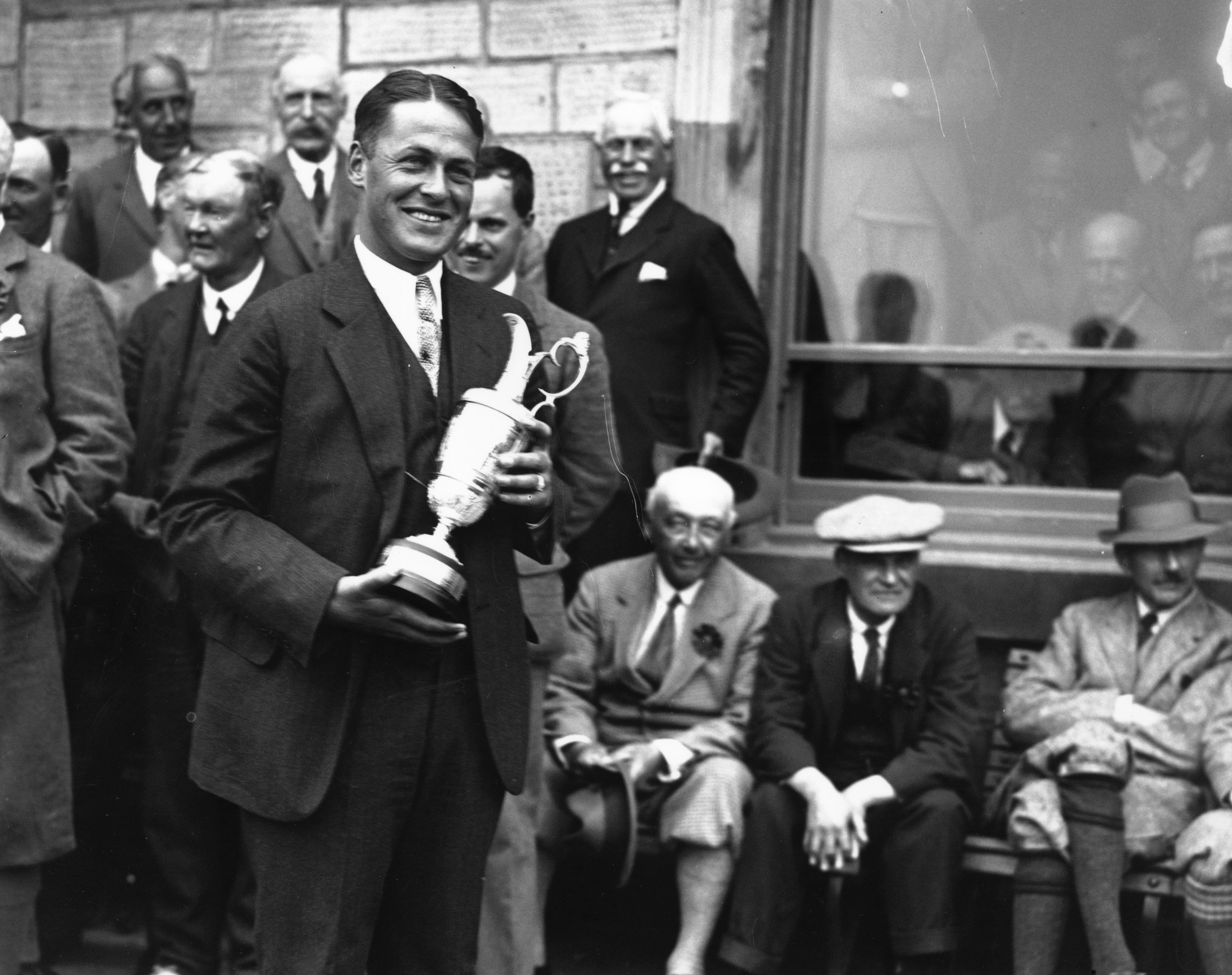
Bobby with the Claret Jug
He became very aware of the history of the game and the importance of links golf and of St Andrews and the other great clubs in the UK.
He earned the admiration of the golfing public on this side of the pond, not only through his remarkable play but also through his appreciation of the knowledge the golf fans displayed when walking British fairways.
The Freedom of St Andrews
In 1958, when his health had really declined, he travelled once more to captain the US World Team Championship squad on the Old. He wanted to see the place one more time. He was also going to be awarded the Freedom of the City of St Andrews on his visit – it was the first time since Benjamin Franklin in 1759 that an American has been granted that honour. Which says something. Jack Nicklaus has since received the award.
Founding Augusta
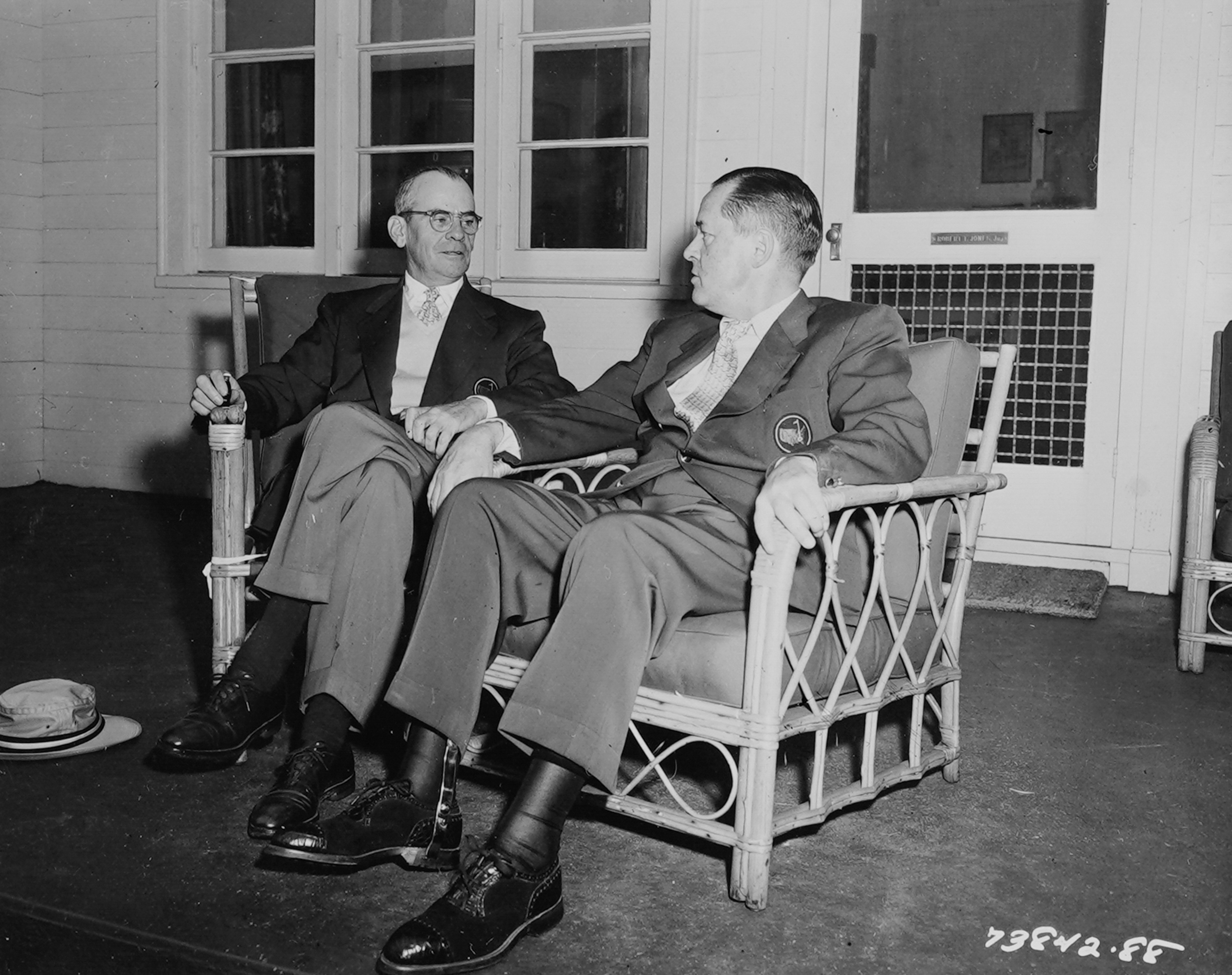
Bobby Jones and Clifford Roberts
Jones wanted somewhere to play golf with his friends away from the media circus that surrounded him. Jones told Clifford Roberts (a Wall Street stockbroker and friend of Jones) he dreamed of establishing his own club in Georgia. He trusted Roberts to find him a site. The Wall Street man did so in 1931 – an abandoned commercial nursery and plantation on the edge of Augusta. They secured funding to acquire the land – some 365 acres and they set about building a club. It would become Augusta National.
Augusta National Invitational Tournament
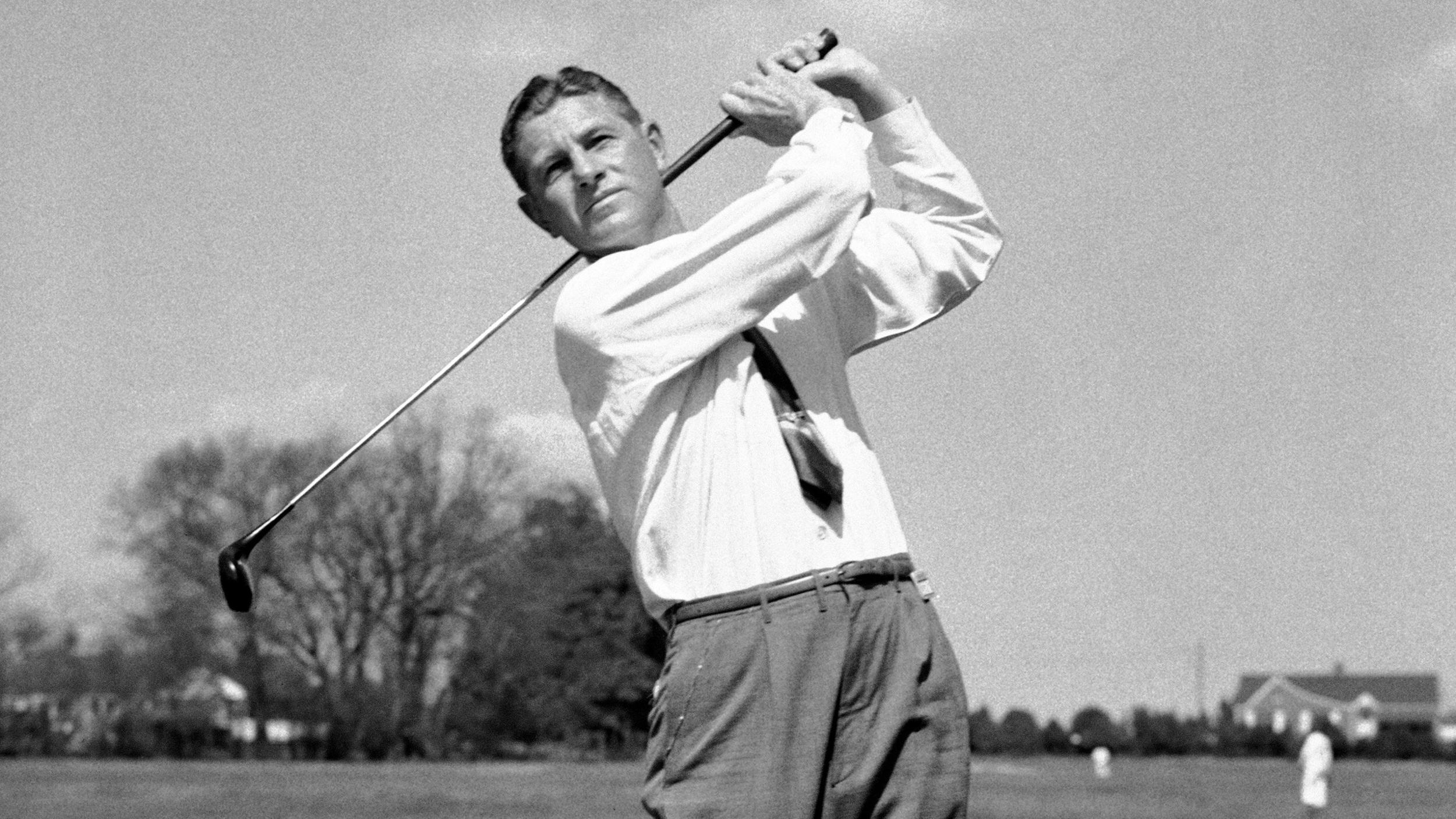
Horton Smith
To mark the course opening, there was a plan to host a tournament in spring of 1934. it was the Augusta National Invitational at that stage, then it became The Masters in 1939. But largely thanks to Jones’s reputation, the inaugural event attracted a good number of the top players of the day. Horton Smith was the winner, ahead of Craig Wood.
There wasn’t much money coming into the club in the early days. In fact, at the inaugural tournament in 1934, Smith (and the top finishers) couldn’t be paid until some of the members chipped in. There weren’t enough members at that point. Problems continued and the club briefly closed after Gene Sarazen had hit the shot heard around the world in winning in 1935.
But thankfully, the club survived and The Masters became not only one of the world’s great sporting events but also part of Bobby Jones’ incredible legacy.
That legacy
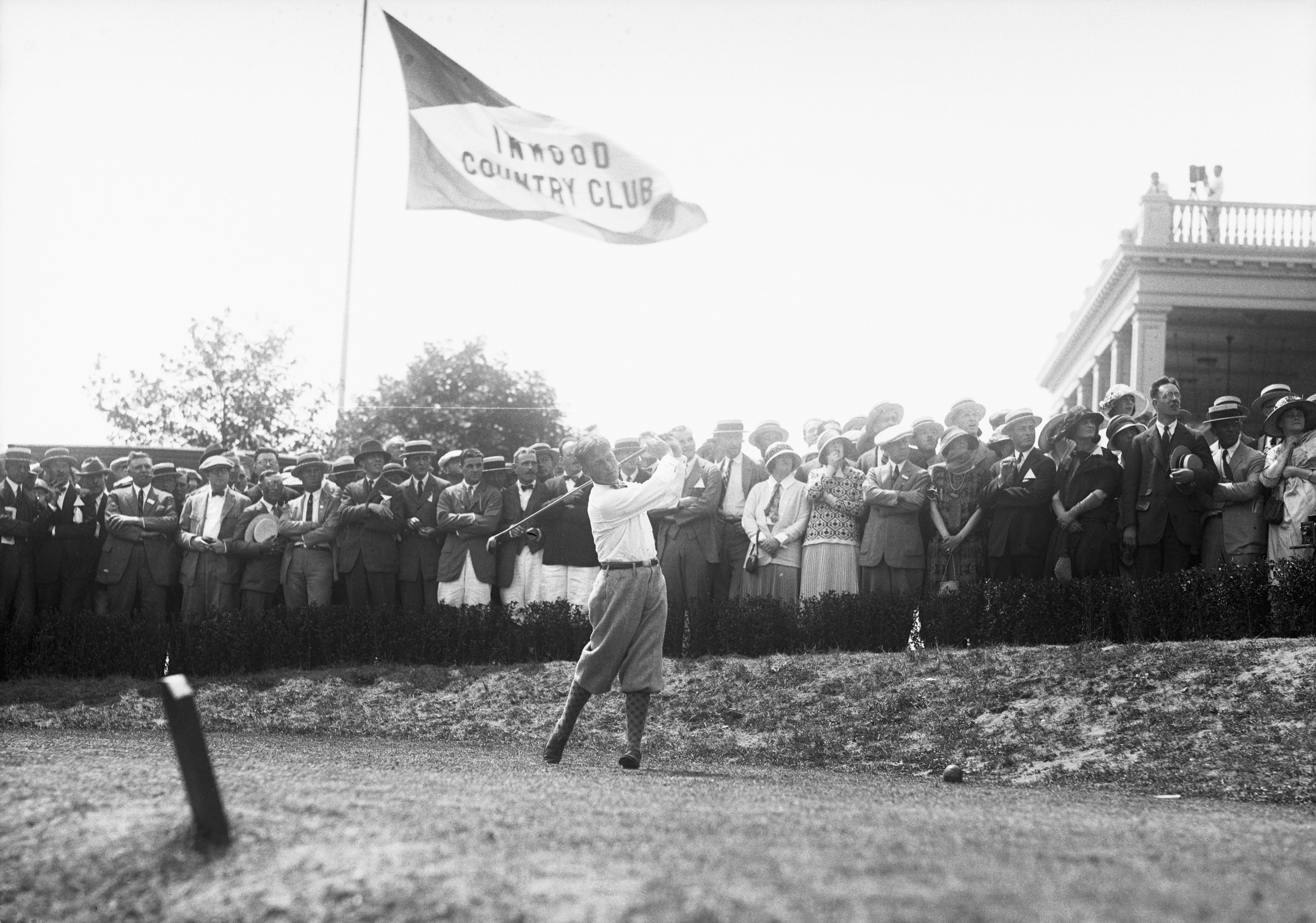
Bobby Jones
He was a genius on the fairways, a gentleman off them, an ambassador and custodian of the traditions and beliefs of golf, beloved by all those who recognised the very essence of golf in the soul of the great man from Georgia.

Fergus is Golf Monthly's resident expert on the history of the game and has written extensively on that subject. He has also worked with Golf Monthly to produce a podcast series. Called 18 Majors: The Golf History Show it offers new and in-depth perspectives on some of the most important moments in golf's long history. You can find all the details about it here.
He is a golf obsessive and 1-handicapper. Growing up in the North East of Scotland, golf runs through his veins and his passion for the sport was bolstered during his time at St Andrews university studying history. He went on to earn a post graduate diploma from the London School of Journalism. Fergus has worked for Golf Monthly since 2004 and has written two books on the game; "Great Golf Debates" together with Jezz Ellwood of Golf Monthly and the history section of "The Ultimate Golf Book" together with Neil Tappin , also of Golf Monthly.
Fergus once shanked a ball from just over Granny Clark's Wynd on the 18th of the Old Course that struck the St Andrews Golf Club and rebounded into the Valley of Sin, from where he saved par. Who says there's no golfing god?
You must confirm your public display name before commenting
Please logout and then login again, you will then be prompted to enter your display name.
-
 PGA Tour Truist Championship Creator Classic Line-Up And Format Revealed
PGA Tour Truist Championship Creator Classic Line-Up And Format RevealedThe PGA Tour has announced the line-up for the second Creator Classic ahead of the Truist Championship - with YouTubers from outside golf taking on the challenge
By Paul Higham
-
 Are You Tired Of Your High-Handicap Golfer Status? These 4 Substantiated Tips Are Your Salvation
Are You Tired Of Your High-Handicap Golfer Status? These 4 Substantiated Tips Are Your SalvationBeing a high-handicap golfer is not easy, with consistency being difficult to establish and progress hard to come by... until you try these four simple tips!
By Barry Plummer